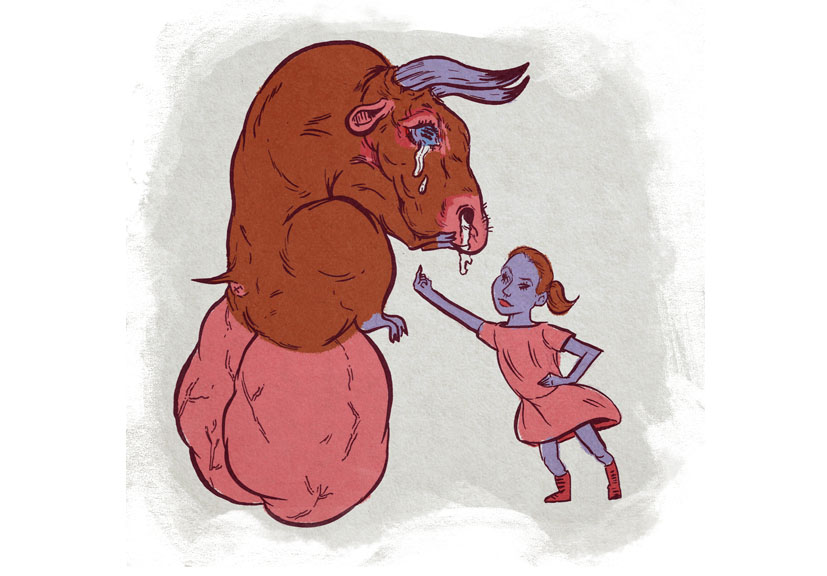In a press release dated Wednesday, April 12, the artist of Wall Street’s Charging Bull, Arturo Di Modica, announced his intention to file suit against the investment firm that commissioned the Fearless Girl for copyright violation and unspecified damages. Di Modica and his lawyers said they believe the Fearless Girl changes the meaning of his statue and projects his work in a negative light. For Di Modica, the Fearless Girl makes the Charging Bull a villain.
In observance of International Women’s Day this past March, State Street Global Advisors commissioned the Fearless Girl from sculptor Kristen Visbal to comment on the indisputable lack of women in Wall Street board rooms. The Fearless Girl currently stands opposite the Charging Bull in the New York City financial district. NYC Mayor Bill de Blasio recently extended the permit to display Fearless Girl, resulting in the now pending suit.
Di Modica created Charging Bull two years after the Stock Market Crash of 1987. For Di Modica, the bull symbolized American strength and financial tenacity. The bull acted as a rallying cry from Di Modica for the American people to persevere and succeed. He erected the 7,000-pound bull in the middle of the night without any permit as guerrilla, or street, art. Due to popular opinion, the bull found its permanent home on Wall Street, where it has lived for almost 30 years.
Made in the same medium and established under night cover, the Fearless Girl paid homage to Di Modica and his bull. A humble four feet tall and 250 pounds, she by no means overshadows the bull. If anything, the reverse is true. Despite this, in less than six months, the little girl has shown the area in which she surpasses the bull: strength.
After researching the history of Di Modica and his bull, I respect both. I respect his dedication to his work, and I believe in the honesty of his intention to create a lasting symbol of strength for America. However, Di Modica fails to acknowledge that as a nation, our cultural understanding of strength is changing.
Strength no longer need be personified as relentless aggression, financial advantage, and physical dominance. Strength isn’t simply conquering and overpowering obstacles, but confronting and overcoming them.
Di Modica’s symbol of strength echoes the gender and cultural biases of the time in which he created it. The 1980s were wrought with toxic stereotypes of masculinity Di Modica physically represents in the Charging Bull.
Seriously, have you seen the balls on that thing?
Most importantly, the industry Di Modica aimed to rally was predominantly male in the 1980s, as it still is today. The Charging Bull symbolizes every reason why Visbal created the Fearless Girl.
Di Modica’s active resistance to the residency of Fearless Girl similarly depicts the uphill climb of cultural change that the statues themselves represent. Di Modica does not see his Charging Bull as inherently or toxically gendered. For him it logically personifies his understanding of strength, but again, his understanding of strength is distorted through a culturally conditioned lens.
At the heart of the pending suit is resistance to cultural change. The bull represents a social norm, and Di Modica’s reaction demonstrates that any challenge to the norm—even a four-foot child—provokes unrest, personal offense and resistance.
The Charging Bull is a product of culture, not a villain; but if allowed to bully the Fearless Girl from where she stands for the sake of norm, he will be.
Culture evolves. Understandings change. Symbols fall in and out of relevancy.
Thank you for your work, Di Modica, but we overcame the Stock Market Crash of 1987. Now we have bigger bulls to fight.
It’s not personal. It’s just culture.






